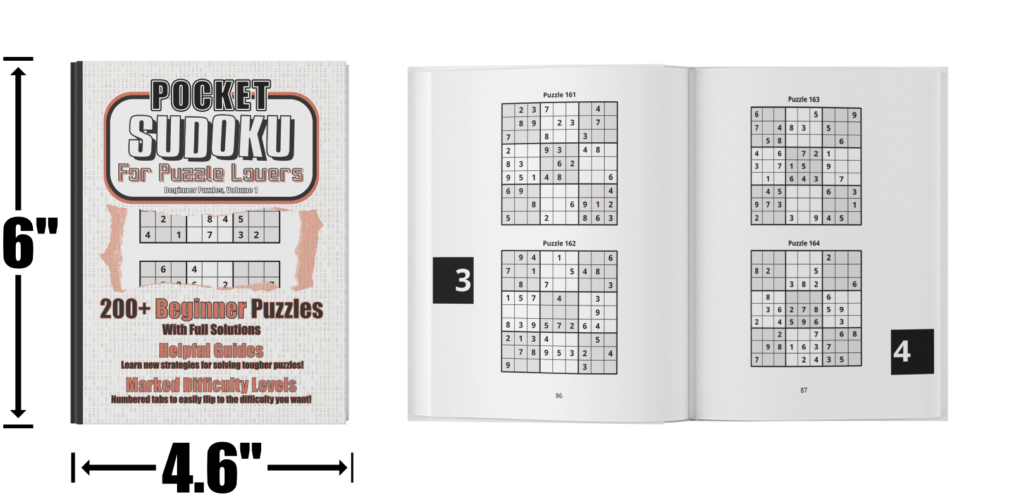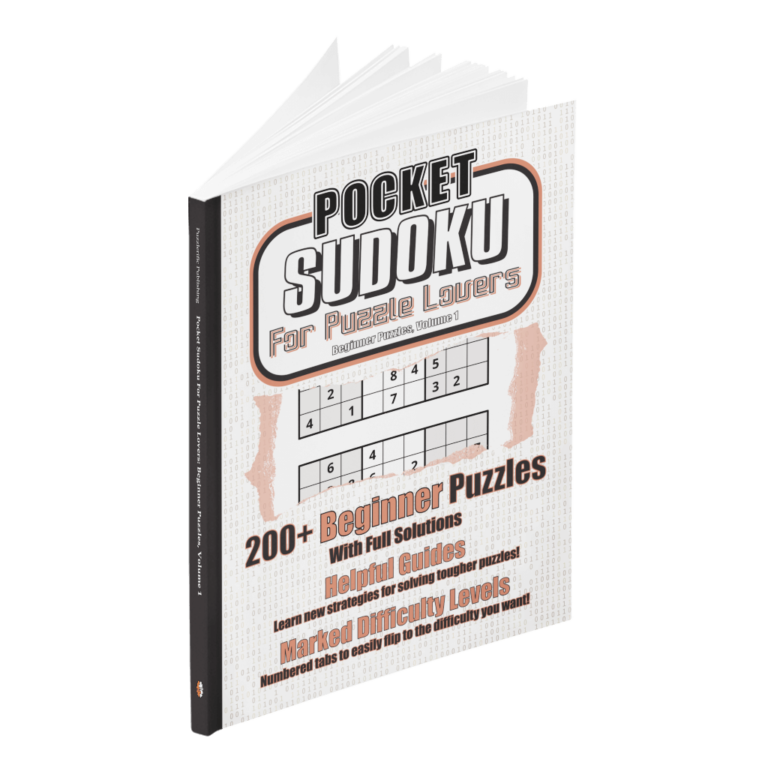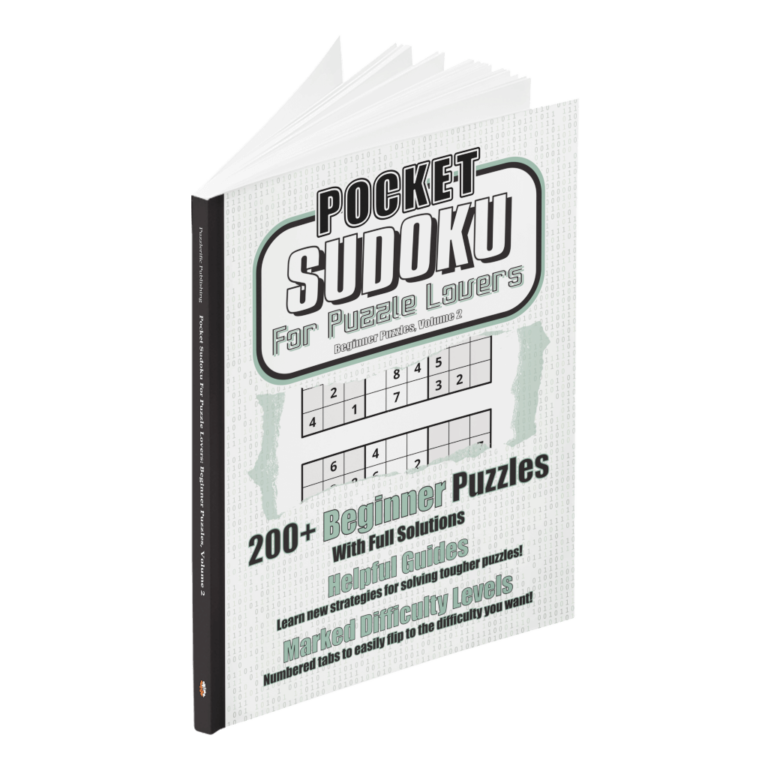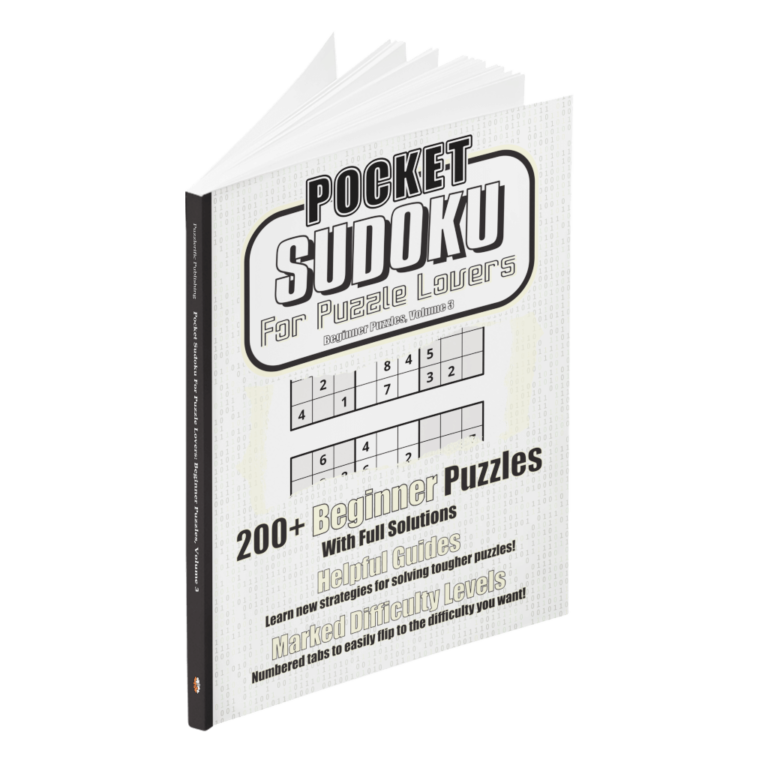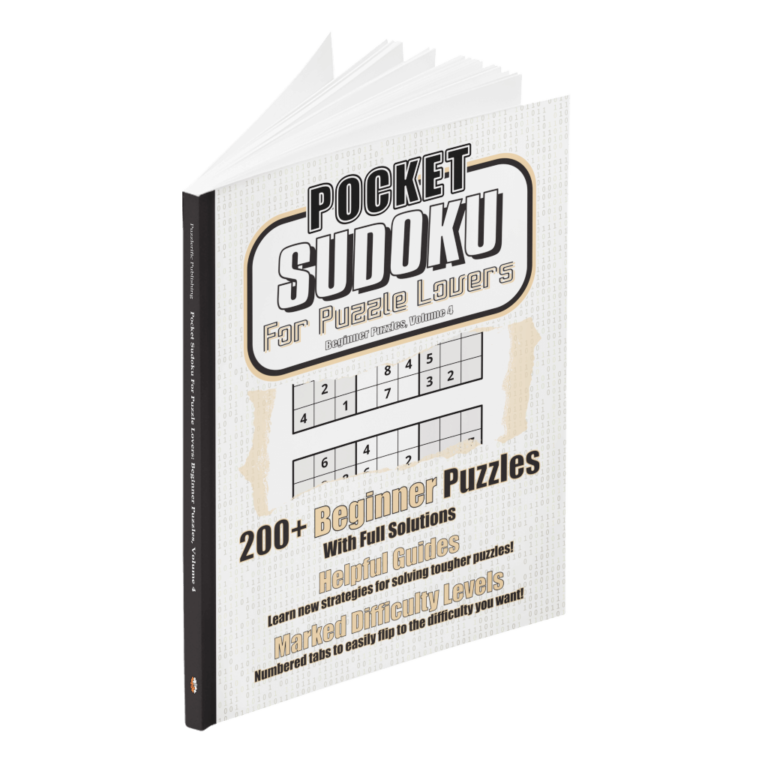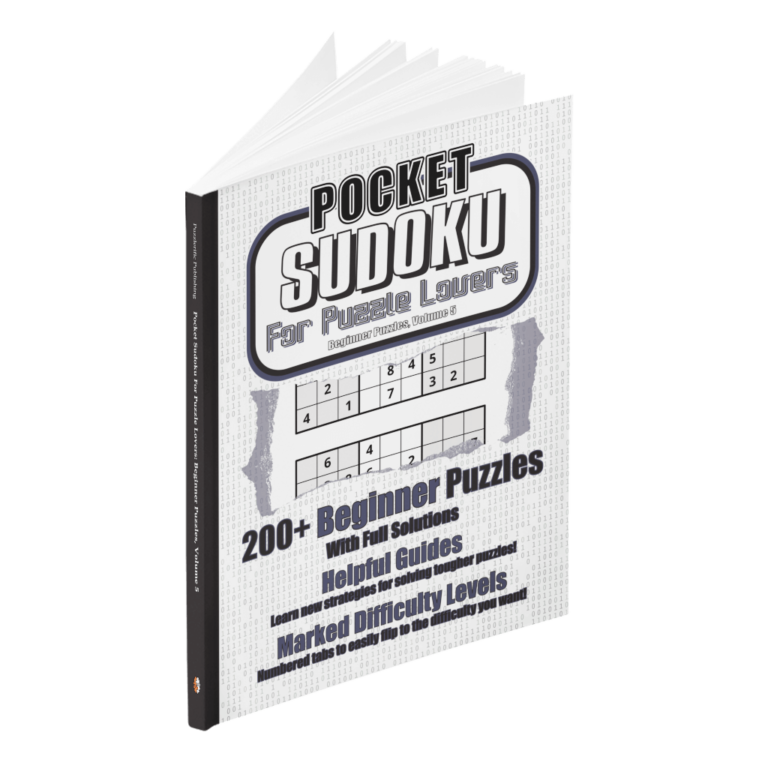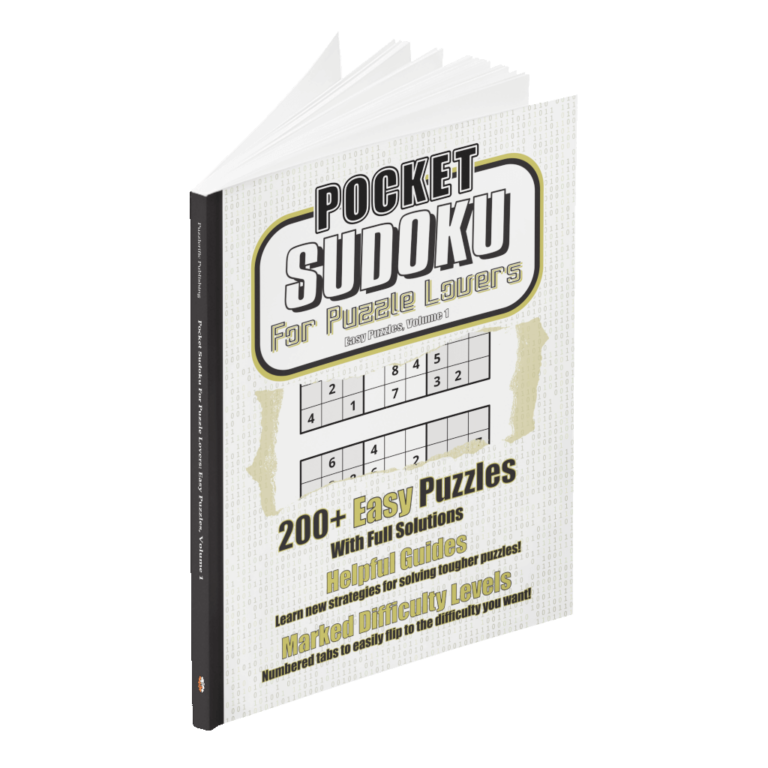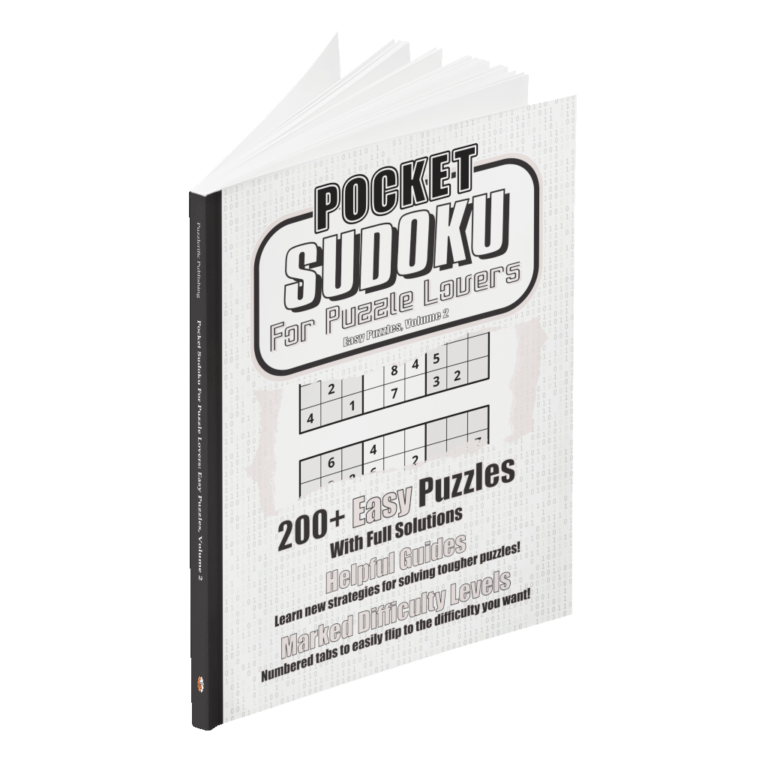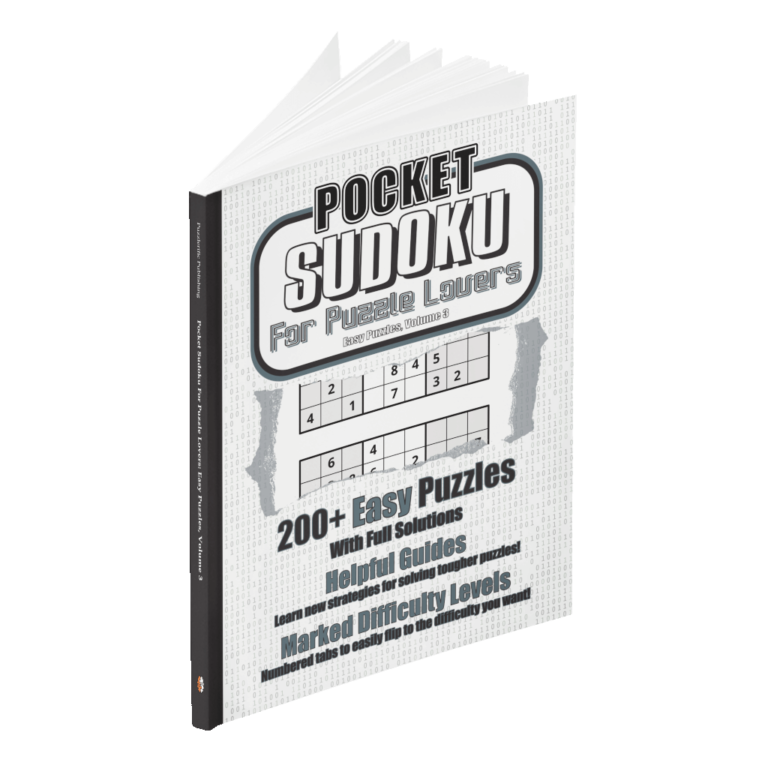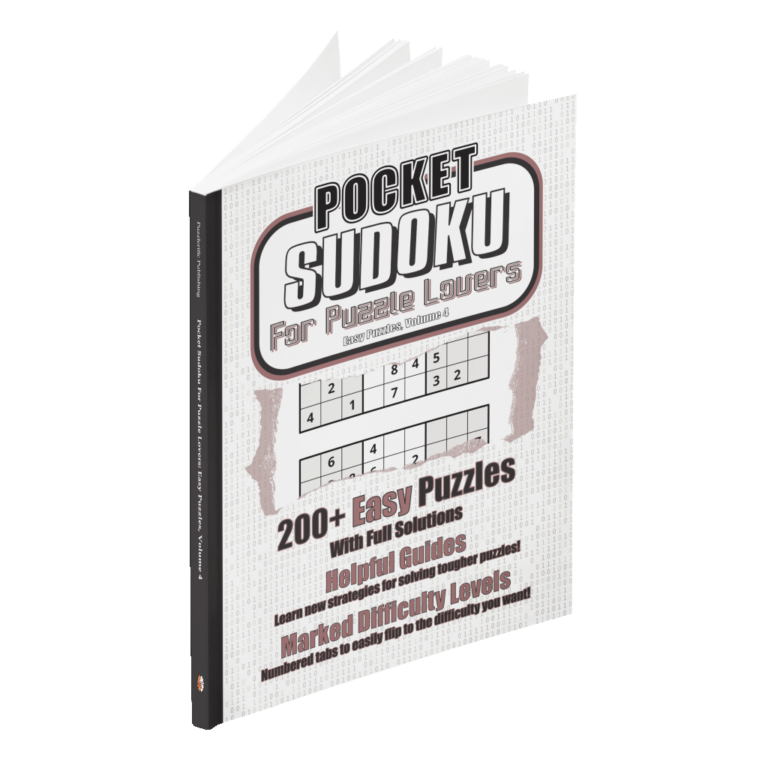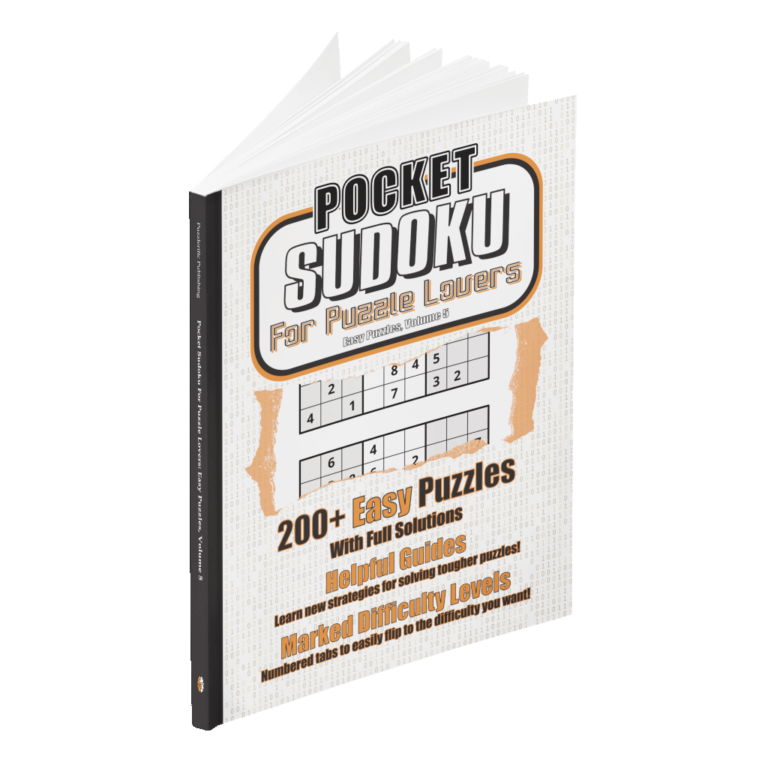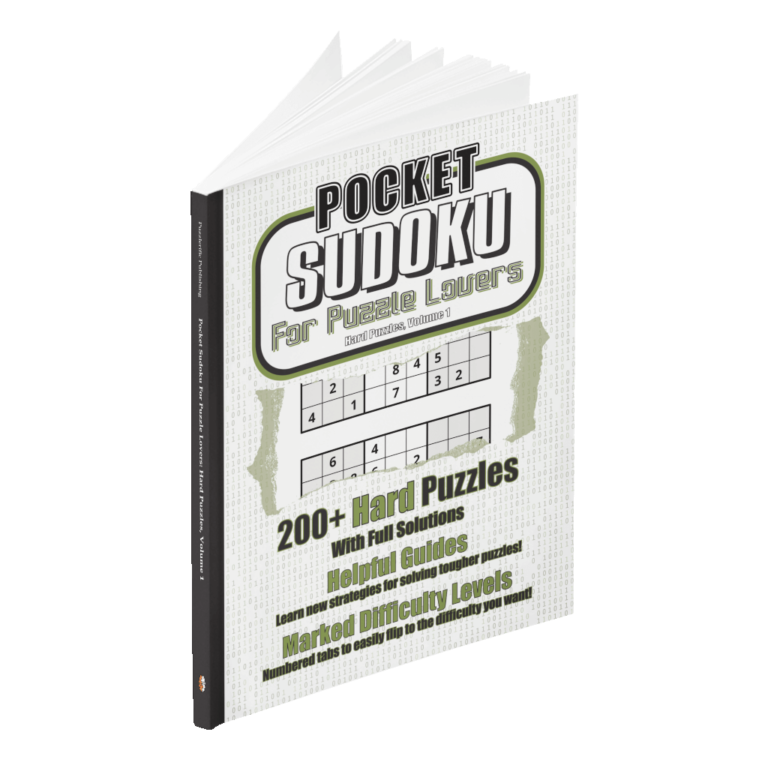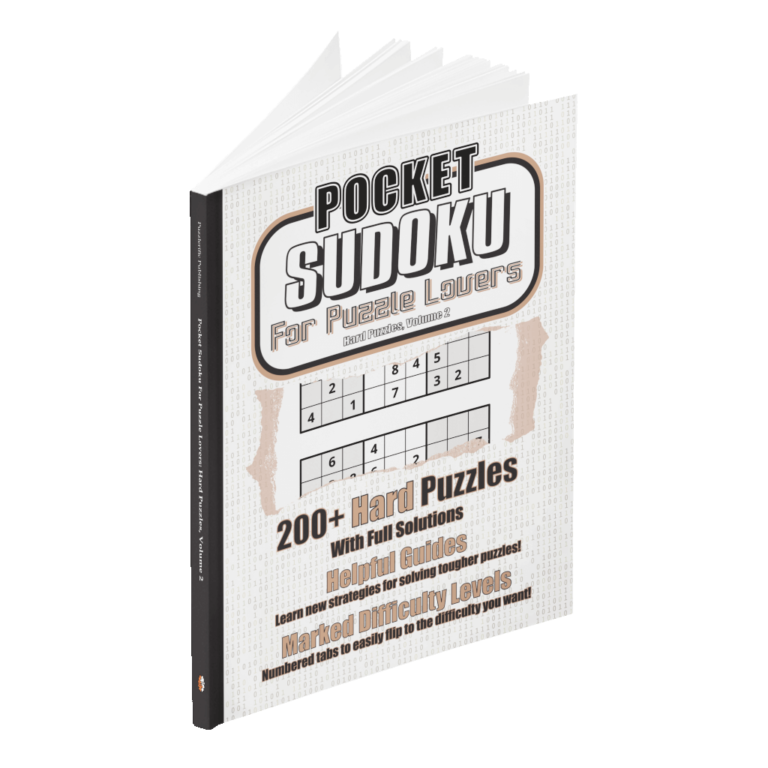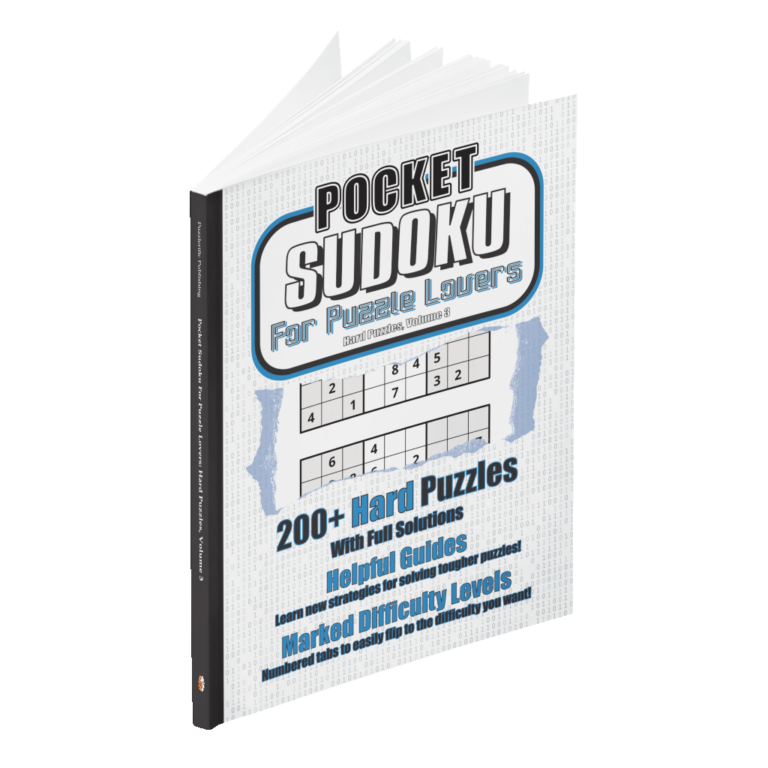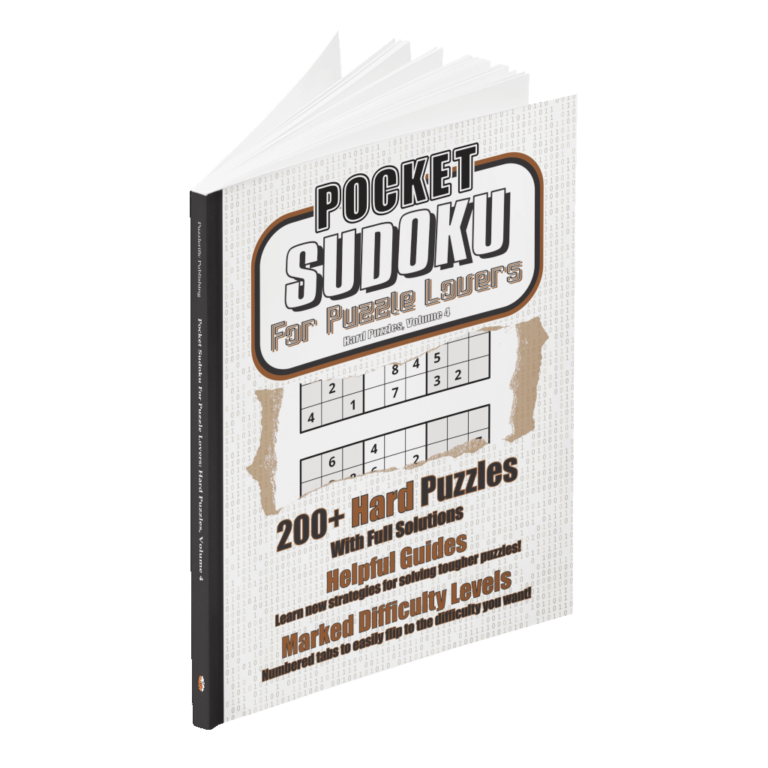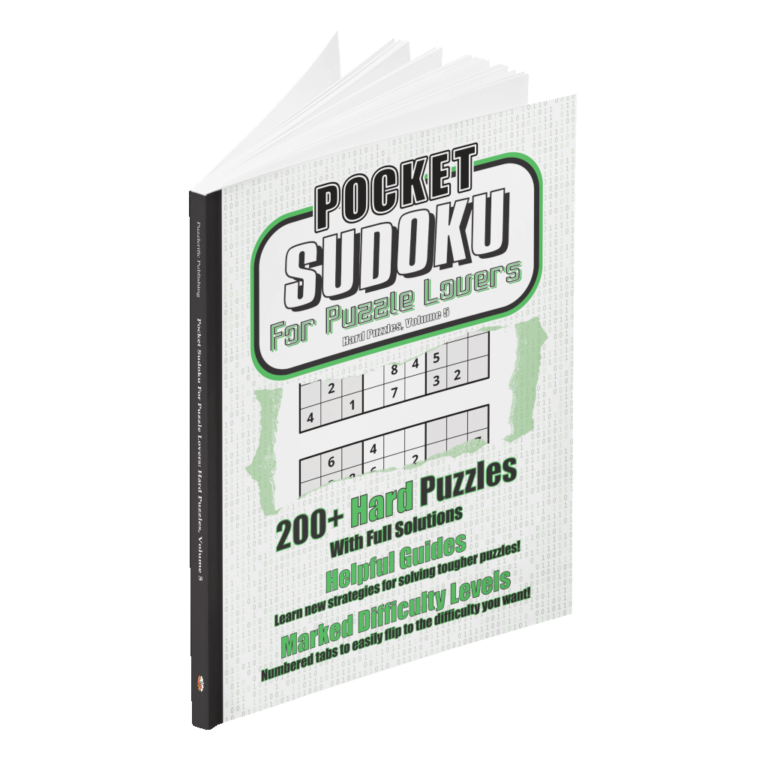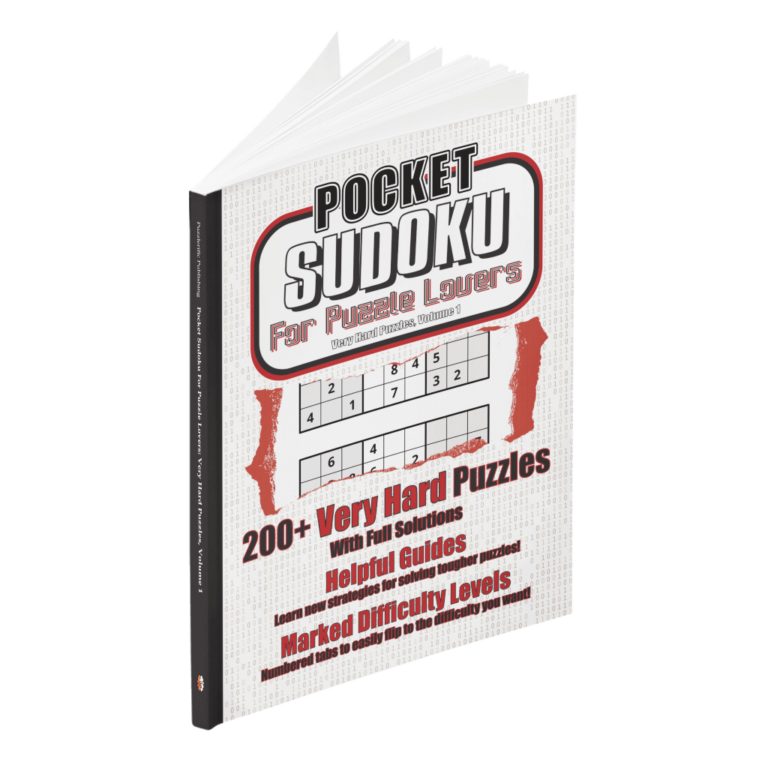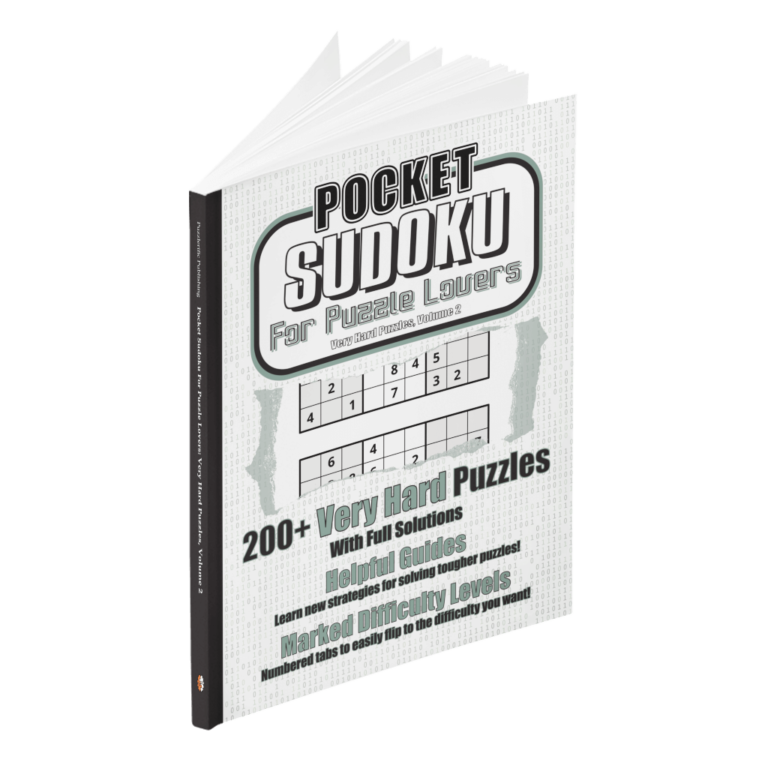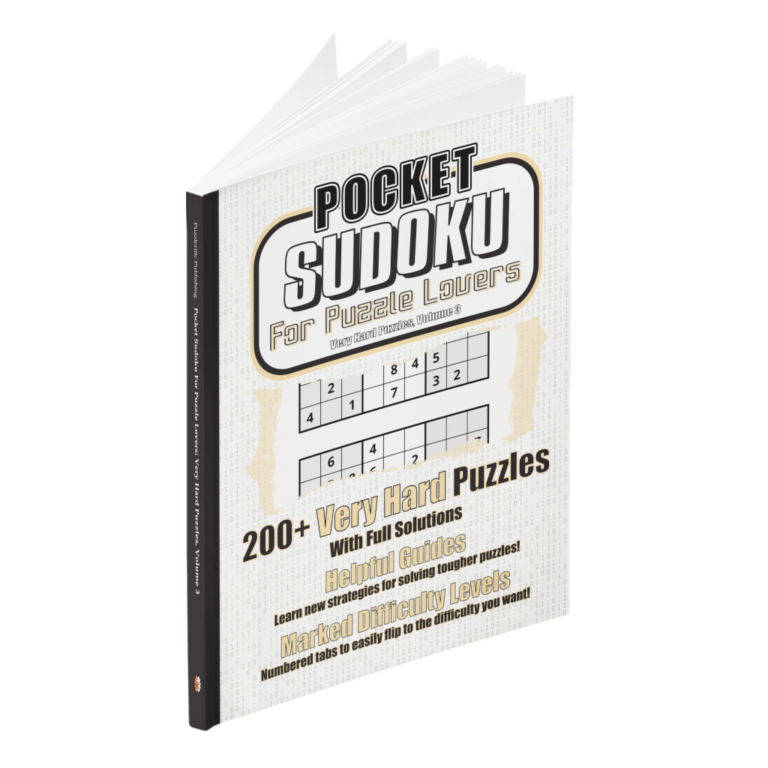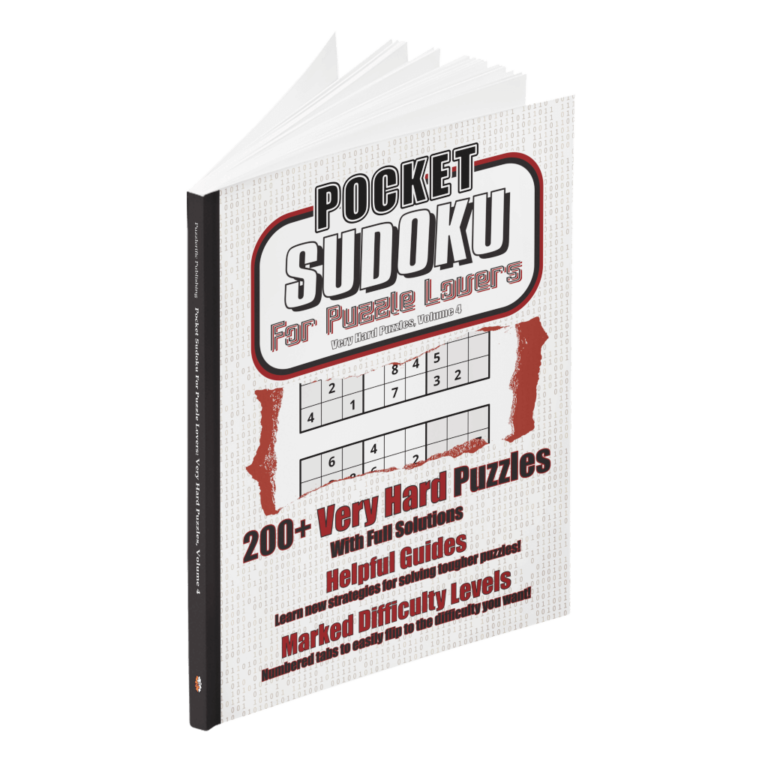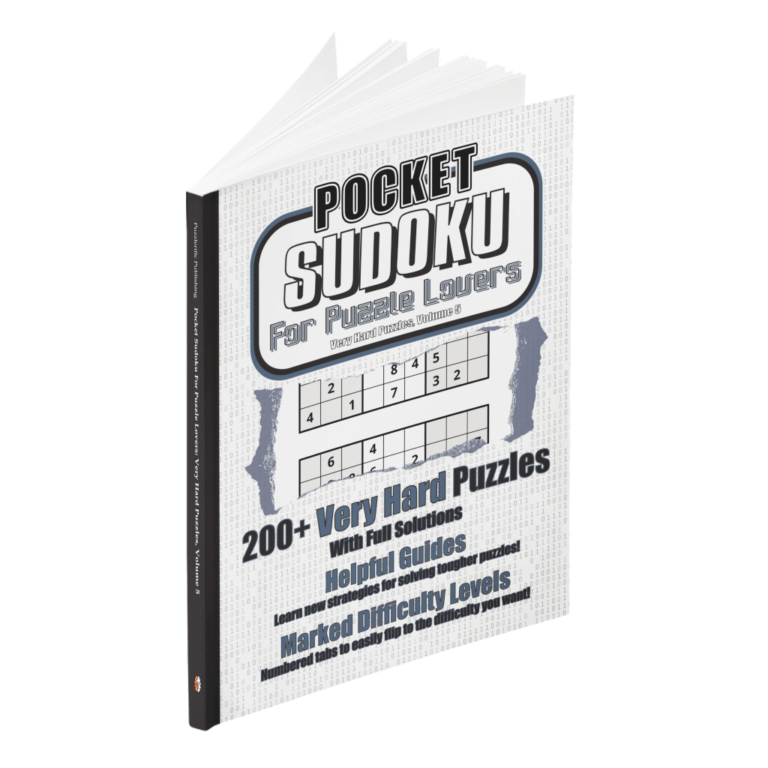Pocket Sudoku for Puzzle Lovers
Pocket Sudoku for Puzzle Lovers is a series of volumes of Sudoku puzzles of varying difficulty levels. The books are designed to provide an appropriate level of difficulty while also pushing the solver, just a bit, to learn new Sudoku solving strategies that will make them a better puzzler!
At only 4.6″x6″ these little books can easily fit into a backpack, purse or handbag, even a big pocket!
We write our own generation and solving algorithms to create the puzzles in our books, so we know exactly how difficult they are and which strategies you might need to solve them. We include little guides and examples of strategies when we think you might need them for the puzzles in the section.
For more Sudoku in a regular letter size, check out our series of Sudoku for Puzzle Lovers!
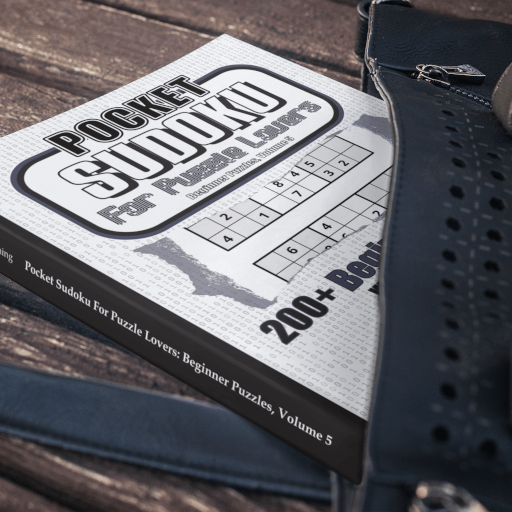
What Makes a Sudoku Puzzle Difficult?
Though it seems to be a common belief, it’s not mainly how many numbers are given at the start as clues that make a puzzle difficult, with puzzles having fewer clues being more difficult than those with more. In fact, it’s the strategies required to solve the puzzle that make it difficult. If more than 30 cells of the 81 in a Sudoku puzzle are given as clues then solving it is very unlikely to require any strategies other than the most rudimentary that we’re all used to; with that many clues, it will also be extremely easy–easier than even a beginner solver would enjoy!
For that reason, our books never have more than around 25 cells given as clues. Even our Easy books are that way since we know that solving those puzzles only requires basic “eyeballing” strategies, such as those often called Last Remaining Cell, or Last Possible Number.
Puzzles that are on the tougher side of Easy, and all of the Medium, Advanced, and Extreme puzzles from us or elsewhere, require more advanced strategies to solve no matter how many clues are given at the start. What sets these more advanced strategies apart from the ones a beginner solver knows is that the remaining options in each cell must be tracked. It seems like a big step up from the basic strategies, but becomes second nature once you start doing it!
Our Easy books introduce beginner solvers to strategies such as those often called Conjugate Pairs and Box-Line Reduction. More advanced books introduce strategies such as those often called X-Wing, Y-Wing, Swordfish, and others. There are dozens of more advanced strategies! And as we always emphasize in our books: though each Sudoku puzzle has a unique solution, there are many ways to get to that solution! So though we sometimes introduce strategies with examples, we encourage our solvers to try to learn strategies from elsewhere as well! The more you know, the better a solver you’ll be!
Beginner Puzzles
Beginner puzzles are those that don’t have many numbers removed from the puzzle. The puzzles in these books have been selected in such a way that those who are new to Sudoku will have no problems getting into the solving at the beginning of the books, but will find themselves challenged by the end. The level of difficulty remains at a Beginner level throughout, but after finishing some of these books, anyone will be ready to move up to the Easy level!
Easy Puzzles
Easy puzzles are those that can be solved using “eyeballing” solving strategies such as those often called Last Remaining Cell or Last Possible Number. Specifically, though, what makes a puzzle “Easy” is that the puzzle can be solved without keeping track of every remaining option in every cell. That doesn’t mean that they can’t still be fun and challenging! If you ever do Sudoku in your local newspapers, then you will be used to this level of puzzle. In the latter sections of our Easy books you’ll find puzzles that will keep you on your toes, even though they meet the Easy criterion. The final section in our Easy books will introduce you to a couple of new, tougher solving strategies that will help you to get to the next level as a solver!
Hard Puzzles
Hard puzzles are those that can only be solved by keeping track of every remaining option in every cell. You might notice that we’ve skipped a “Medium” difficulty; that’s because the leap to keeping track of remaining options can seem daunting to new solvers! In our Hard books, though, we do our best to introduce you to this new level of Sudoku-solving as gently as possible. These puzzles won’t need solving strategies that you’d require in Extreme or Diabolical books! We’ll keep it to those often called Conjugate Pairs, Box-Line Reduction, and other similar strategies. These books are a great way for people new to Sudoku, but enthusiastic to improve, to level-up their puzzling! We even include fewer puzzles per page so that you have room to make notes.
Very Hard Puzzles
Very Hard puzzles expand on the Hard puzzles by requiring the use of more varied solving strategies. These puzzles still won’t need solving strategies that you’d require in Extreme or Diabolical books, but they’ll be a step up from Hard! Strategies such as those often called Conjugate Triples, X-Wing, and other similar strategies, will add to the challenge.
More series coming soon!
